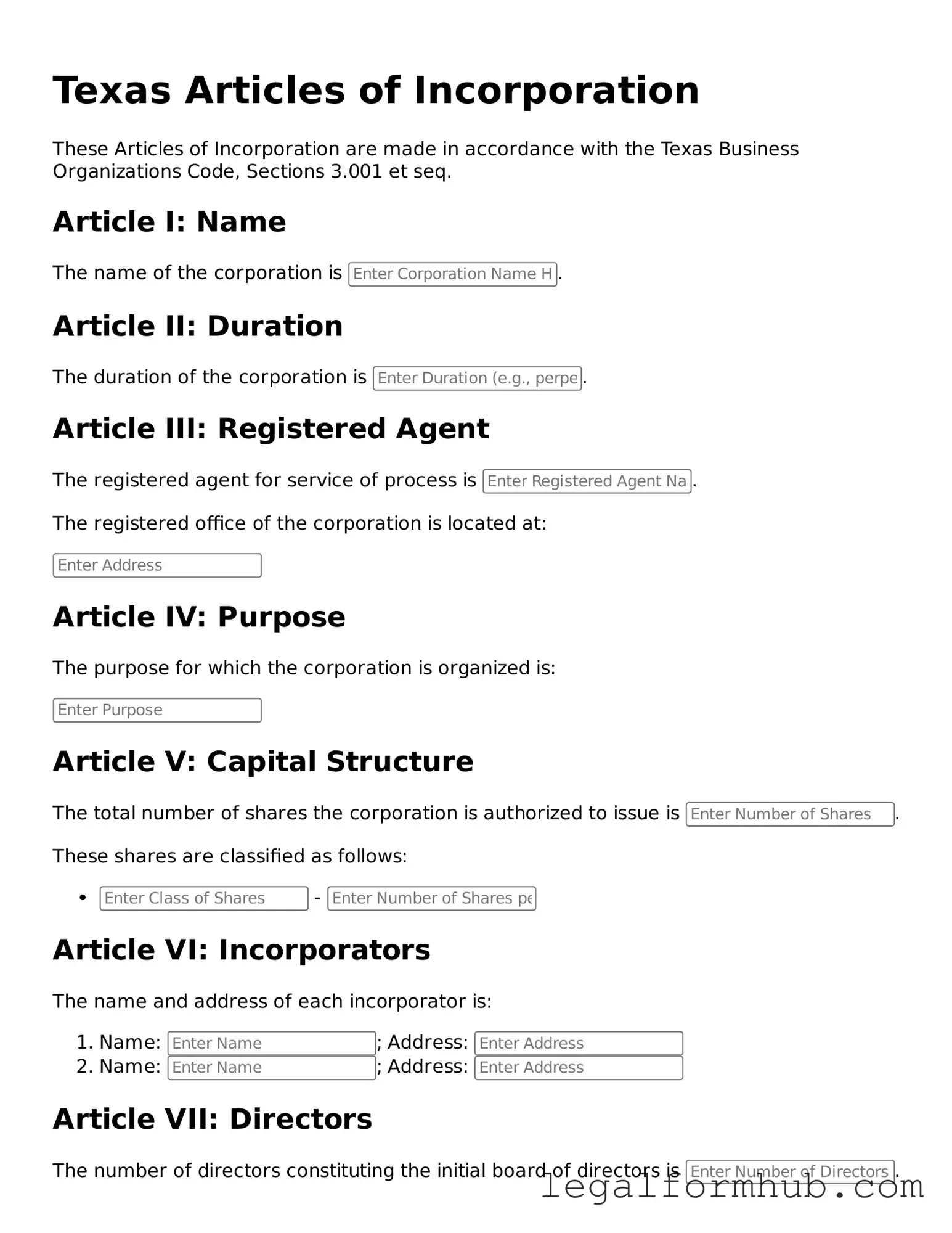The Texas Articles of Incorporation form is similar to the Certificate of Incorporation used in many states. Both documents serve as foundational legal papers that establish a corporation's existence. They typically include essential information such as the corporation's name, purpose, and the address of its registered office. While the specific requirements may vary by state, the overall function of these documents remains consistent, providing a formal recognition of the corporation by the state government.
Another document comparable to the Texas Articles of Incorporation is the Articles of Organization, which is utilized for limited liability companies (LLCs). Like the Articles of Incorporation, the Articles of Organization outline key details about the entity, such as its name, registered agent, and business purpose. Both documents are filed with the state and are critical for legal recognition, though they cater to different types of business structures.
The Bylaws of a corporation share similarities with the Texas Articles of Incorporation in that they both govern the internal operations of a corporation. While the Articles of Incorporation establish the corporation's existence, the Bylaws provide the rules and procedures for managing the corporation. These rules often cover aspects such as the election of directors, the holding of meetings, and the rights of shareholders, creating a comprehensive framework for corporate governance.
The Statement of Information is another document that bears resemblance to the Texas Articles of Incorporation. This document is often required in various states to provide updated information about a corporation, including its address, officers, and registered agent. While the Articles of Incorporation serve as the initial filing to create a corporation, the Statement of Information ensures that the state has current and accurate details about the business as it evolves.
In some jurisdictions, the Certificate of Formation is used interchangeably with the Articles of Incorporation. This document serves a similar purpose, as it officially establishes a corporation and includes essential details such as the name, duration, and purpose of the business. The terminology may differ, but both documents fulfill the same fundamental role in the formation of a corporation.
The Partnership Agreement is akin to the Texas Articles of Incorporation in that it lays out the foundational structure for a business entity. While the Articles of Incorporation focus on corporations, the Partnership Agreement details the roles, responsibilities, and profit-sharing arrangements among partners in a partnership. Both documents are crucial for establishing the legal framework within which the respective entities operate.
The Employment Application PDF form is a standardized document used by employers to gather essential information about job applicants. This form typically includes sections for personal details, work history, and educational background, facilitating a streamlined hiring process. To get started, fill out the form by clicking the button below or visit Fill PDF Forms for more details.
In some cases, the Operating Agreement for an LLC can be compared to the Texas Articles of Incorporation. Like the Articles of Incorporation, the Operating Agreement outlines the management structure and operational procedures of the LLC. It includes details such as member responsibilities, voting rights, and distribution of profits, serving as an internal document that complements the formation papers filed with the state.
Lastly, the Foreign Corporation Registration is similar to the Texas Articles of Incorporation in that it allows a corporation formed in one state to operate in another state. This registration process requires the corporation to provide information similar to what is included in the Articles of Incorporation, such as its name, business purpose, and registered agent. This document ensures that the corporation complies with the laws of the new state while retaining its original incorporation status.
